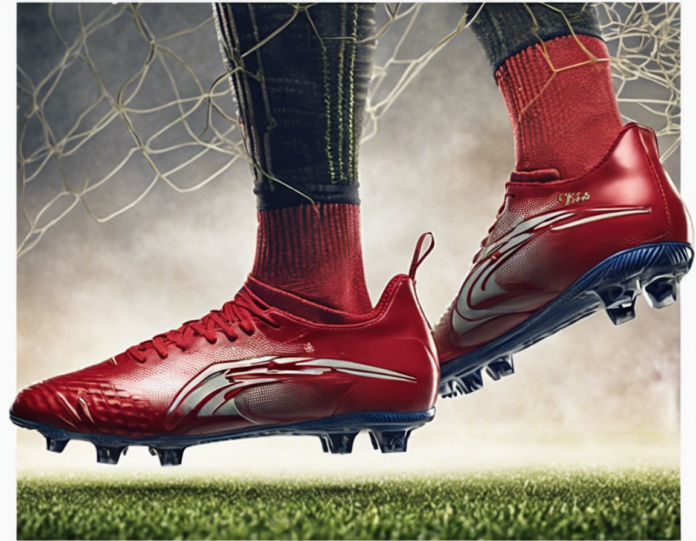In the world of football, having the right shoes is crucial for both performance and injury prevention. With the myriad of football shoes available in the market, it can be overwhelming to choose the perfect pair that suits your playing style and needs. In this ultimate guide, we will walk you through everything you need to know about football shoes and help you make an informed decision when purchasing your next pair.
Understanding Different Types of Football Shoes
1. Firm Ground (FG) Football Shoes
These are the most common type of football shoes suitable for playing on natural grass pitches. They typically have molded studs that provide traction and stability on firm ground surfaces.
2. Soft Ground (SG) Football Shoes
Designed for wet and muddy conditions, SG football shoes come with longer metal studs that offer better grip on slippery surfaces. These are ideal for players competing in rainy weather or on poorly maintained pitches.
3. Artificial Grass (AG) Football Shoes
With turf becoming more popular, AG football shoes are specifically designed for artificial grass pitches. They have shorter, rubber studs that provide excellent traction and prevent injury on artificial surfaces.
4. Indoor Football Shoes
Also known as futsal shoes, indoor football shoes have a flat rubber sole that offers grip and control on indoor courts. They are lightweight and ideal for playing quick-paced games in indoor arenas.
Key Factors to Consider When Choosing Football Shoes
1. Playing Position
Different positions require specific features in football shoes. For example, strikers might prefer lightweight shoes for speed and agility, while defenders may opt for shoes with added ankle support for protection during tackles.
2. Material
Leather, synthetic, and knit materials are common in football shoes. Leather offers comfort and a more natural feel, while synthetic materials are often lighter and more durable. Knit uppers provide a snug fit and enhanced ball control.
3. Fit and Comfort
It is essential to choose football shoes that fit snugly but comfortably. A proper fit reduces the risk of blisters and injuries while ensuring optimal performance on the field.
4. Stud Configuration
Stud patterns vary among football shoes and can impact traction and maneuverability. Choose a stud configuration based on the type of playing surface you most frequently encounter.
5. Budget
Football shoes come in a wide price range. While it’s tempting to opt for high-end models, there are quality options available at lower price points. Consider your budget and look for shoes that offer the best value for money.
Maintaining Your Football Shoes
Proper maintenance can prolong the lifespan of your football shoes and ensure they perform at their best. Here are some tips to care for your football shoes:
- **Clean your shoes after each use to prevent dirt buildup and maintain their appearance.
- **Avoid leaving your shoes in direct sunlight or near a heat source, as this can damage the materials.
- **Store your shoes in a cool, dry place to prevent mold growth and maintain their shape.
- **Regularly inspect the studs and soles for wear and tear, replacing them when necessary to prevent slipping and injuries.
FAQs on Football Shoes
Q1. How often should I replace my football shoes?
A1. On average, football shoes last for about 6 months to a year, depending on frequency of use and playing conditions. Replace them when you notice significant wear and tear or loss of traction.
Q2. Can I use the same shoes for different playing surfaces?
A2. While some shoes are versatile enough to be used on multiple surfaces, it is recommended to have specific shoes for different playing conditions to optimize performance and minimize the risk of injury.
Q3. Should I buy football shoes a size larger for growing feet?
A3. It’s best to buy football shoes that fit properly without extra room to prevent blisters and discomfort. If buying for children with growing feet, consider adjustable features or purchasing new shoes when needed.
Q4. How do I break in new football shoes?
A4. To break in new football shoes, wear them for short periods during practice sessions to allow the materials to mold to your feet. Gradually increase the wearing time to avoid discomfort.
Q5. Are artificial grass football shoes suitable for turf pitches?
A5. While artificial grass shoes are designed for synthetic surfaces, they can also be used on turf pitches. However, be aware that the stud configuration may not provide the same level of traction as shoes specifically designed for turf.
Whether you’re a seasoned player or just starting your football journey, choosing the right pair of football shoes can significantly impact your game. By considering factors like playing surface, playing position, materials, and maintenance, you can find the perfect shoes that enhance your performance and keep you comfortable on the field. Remember to prioritize fit and functionality while also expressing your personal style with the design of your football shoes.









